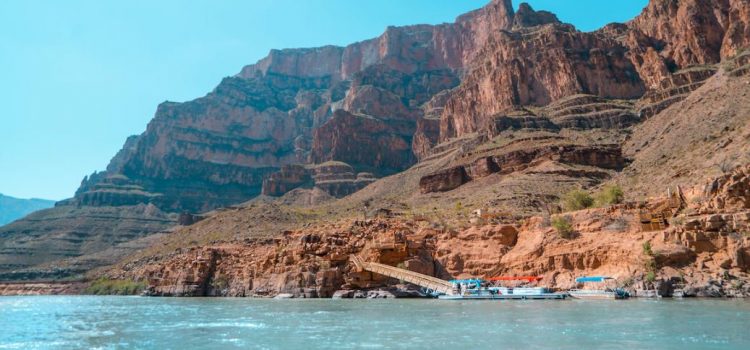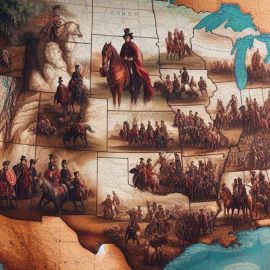
This is a free excerpt from one of Shortform’s Articles. We give you all the important information you need to know about current events and more.
Don't miss out on the whole story. Sign up for a free trial here .
What is the Colorado River Agreement? Is it too late to save the river?
The Colorado River is rapidly drying up due to mismanagement and the ongoing drought in the Western US. The seven Colorado River Basin states have struck a deal with the Biden administration to drastically reduce their water consumption, which they hope will stabilize the water supply for the short term.
Below we’ll go over the Colorado River Agreement, including why it’s needed, the details of the deal, and whether or not it’s too late.
The Colorado River Is Drying Up
The seven US states in the Colorado River Basin—California, Arizona, Nevada, Colorado, New Mexico, Utah, and Wyoming—have reached an agreement with the Biden administration to drastically reduce water consumption over the next several years. This deal comes at a time when the western US is going through its worst drought in over a millennium, and the water level in the Colorado River has gotten alarmingly low.
Water from the Colorado River and its tributaries is widely used for agricultural irrigation. Because the water crosses so many borders, its use is controlled by interstate agreements and international treaties. Current agreements and treaties allocate a total of 17.5 million acre-feet of water, but that’s more water than the river can provide.
As the watershed dries up, the shortage of irrigation water will devastate agriculture. Winter vegetable production is expected to be hit the hardest, as farms that rely on water from the Colorado River produce as much as 95% of the broccoli, lettuce, spinach, and other vegetables that supply US markets in the winter.
This article will explain the terms of the Colorado River Agreement.
The Terms of the Deal
This deal—agreed upon by all seven Colorado River Basin states—reduces Arizona, California, and Nevada’s water allotments from the river by 13%. This measure will conserve about 980 billion gallons of water through the end of 2026.
For its part, the Biden administration has committed to compensating the states for three-quarters of the water savings, to the tune of approximately $1.2 billion in federal funds. This money will be drawn from the $4.6 billion of federal drought contingency funding provided by the Inflation Reduction Act of 2022.
You can read the full proposal on the US Department of the Interior’s website.
Why We Need It
The Colorado River provides water and hydropower to tens of millions of people. It also feeds into two of the US’s largest reservoirs—Lake Powell and Lake Mead—and it irrigates farmland that produces vegetables for grocery stores all over the country.
However, the Colorado River has been rapidly shrinking due to mismanagement and the effects of climate change. The Colorado River Compact of 1922, which sets current allotments for the Basin states, was agreed upon following an unusually wet period—and its terms have proved unsustainable during the 23-year “megadrought” hammering the western US.
Finally, the Colorado River Agreement is voluntary, meaning it will bypass the need for federal restrictions on water use, which likely would have led to a lengthy and expensive legal battle between the Basin states and the Biden administration.
Looking Ahead
Though it’s touted as a historic breakthrough, some experts say the agreement may not be enough to save the Colorado River from drying up, especially if the megadrought continues. In fact, this deal only conserves half the amount of water that federal regulators had originally requested. Furthermore, Mexico and Native American tribes in the area—who also rely on the Colorado River for water—aren’t included in the deal, and therefore have no obligation to reduce their consumption.
However, it’s worth noting that this agreement was never meant to be a permanent solution, only a temporary stopgap measure. The Colorado Basin states expect to start discussing long-term plans soon, though there’s no word yet as to what those future plans might entail.

Want to fast-track your learning? With Shortform, you’ll gain insights you won't find anywhere else .
Here's what you’ll get when you sign up for Shortform :
- Complicated ideas explained in simple and concise ways
- Smart analysis that connects what you’re reading to other key concepts
- Writing with zero fluff because we know how important your time is






